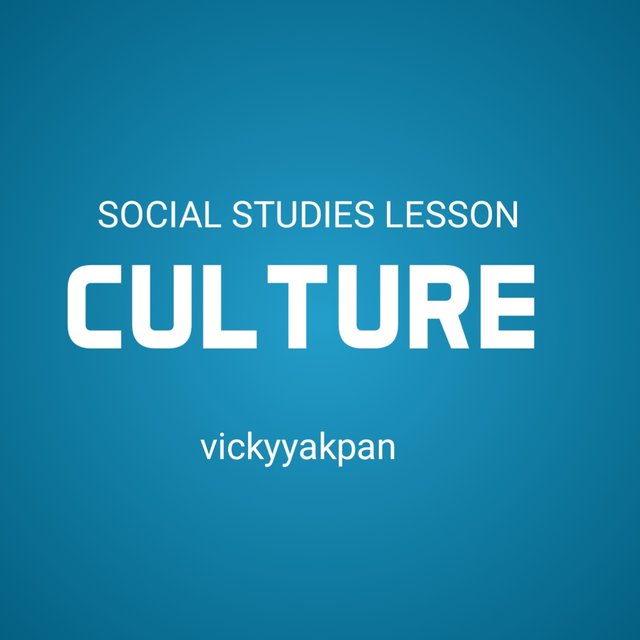CULTURE @vickyyakpan

| DEFINITION OF CULTURE |
|---|
Culture is the collective conduct and beliefs of a crew of people that is exceeded down from era to generation, shaped by using the environment, politics, and experiences of the group. Culture includes the values and attitudes that information behavior, the language spoken, spiritual beliefs, customs and rituals, music, literature, art, and different components of human expression. It can be viewed as an universal way of lifestyles and a shared understanding amongst members of a community, allowing them to interact with one every other and make sense of the world around them.
| THE FIVE (5) COMPONENTS OF CULTURE |
|---|
Culture is composed of 5 aspects that work together to form a people's conduct and attitudes. These elements are language, symbols, values, beliefs, and norms.
LANGUAGE
Language is the most necessary thing of culture. It is the major tool through which we communicate, categorical ourselves, and share records with others.
SYMBOLS
Symbols are objects, signs, or actions that characterize some thing else. They are frequently used to talk ideas, beliefs, and values.
VALUES
Values are the beliefs and ideas that a team of human beings keep to be necessary and desirable. They reflect a group's feel of what is good, right, and desirable.
BELIEFS:
Beliefs are the standards and convictions that humans share about how the world works. They impact how people think, act, and feel about the world round them.
NORMS:
Norms are the tacit rules and expectations that govern the conduct of humans within a culture. They are the “unwritten laws” that dictate how we must behave in positive situations.
| CHARACTERISTICS OF CULTURE |
|---|
Culture is made up of many distinct characteristics, consisting of language, beliefs, values, norms, symbols, and even technologies. It is surpassed down through generations and is continuously altering as human beings engage and share experiences. In general, lifestyle affords us with a feel of identity and helps us feel linked to a large community. It is additionally an necessary issue in how humans and societies have interaction with each other. Culture influences behavior, shapes thoughts and feelings, and provides a framework for decoding the world and grasp how to navigate it. It helps persons and communities specific their values, beliefs, and goals, whilst offering a experience of steadiness and continuity. It can also shape how human beings engage with one another, including how they shape relationships, resolve conflicts, and create which means in their lives.
| DIFFERENCE BETWEEN MATERIAL CULTURE AND NON-MATERIAL CULTURE |
|---|
- MATERIAL CULTURE:
Material culture refers to objects and artifacts that have been created or shaped by way of humans.
Material way of life is greater tangible and physical.
- NON-MATERIAL CULTURE
Non-material culture refers to the ways of thinking, language, beliefs, values and behaviors shared through a crew of people.
Non-material subculture is much less tangible.
Curated by - @radjasalman